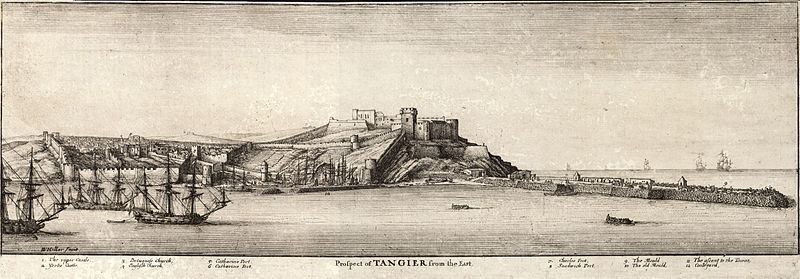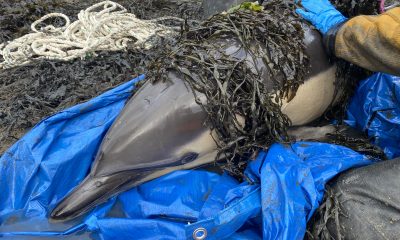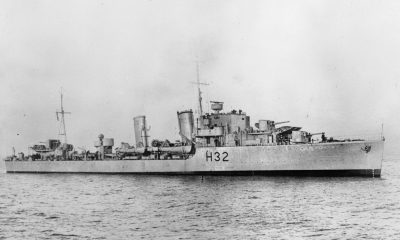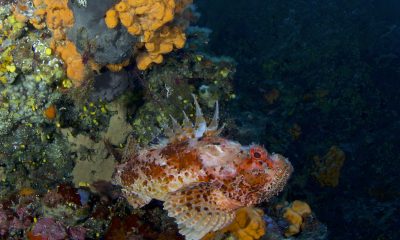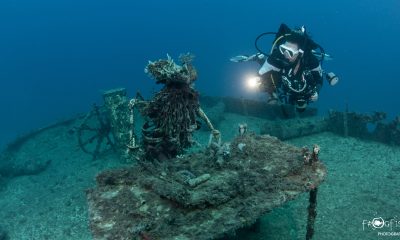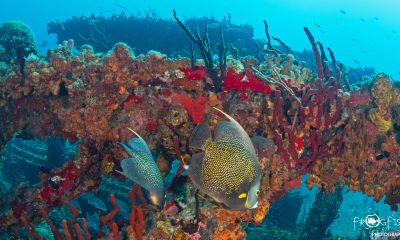News
Divers off Cornwall Discover Poldark Shipwreck
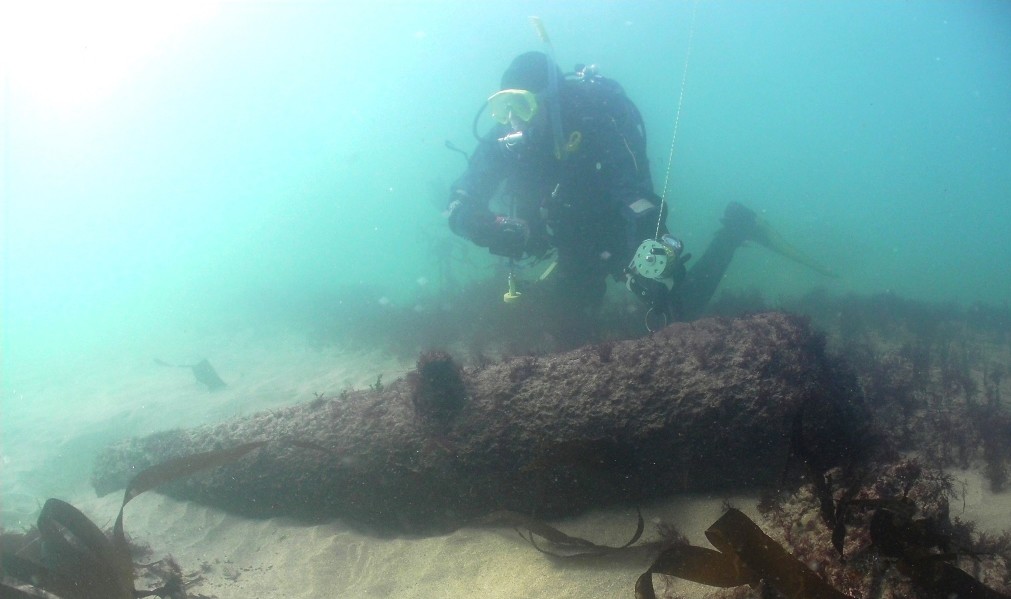
Divers have rediscovered a 17th century shipwreck off Gunwalloe Church Cove in Cornwall, at exactly the spot where the shipwreck scene was filmed in 2014 for the TV series Poldark. First seen by a local diver in 1971 and designated under the Protection of Wrecks Act 1973, the wreck of the Schiedam had been buried for many years under the shifting sands of the cove. The site is now managed by Historic England and dived by a keen local team. The two divers who rediscovered the site this year, novelist and archaeologist David Gibbins and Mark Milburn, of Atlantic Scuba in Penryn, describe the moment:
“We’d searched the cove many times for the Schiedam, but only seen sand. Then the breakthrough came one day after a storm. Snorkelling north over the cove, we saw not just one cannon, but three. It was incredibly exciting. One of the guns was among the longest we’d ever seen on a wreck, standing proud of the seabed on a rocky ledge with the muzzle poking out, almost as if it were on a gun carriage. Exploring the reefs around the guns, we saw other amazing artefacts – concreted musket barrels, cannon balls, lead musket and pistol shot, and even an iron hand-grenade, the wooden plug for the fuse still intact. We knew that most of what we were seeing was cargo carried from the English colony at Tangier, making the wreck a fascinating window into a forgotten corner of history.”
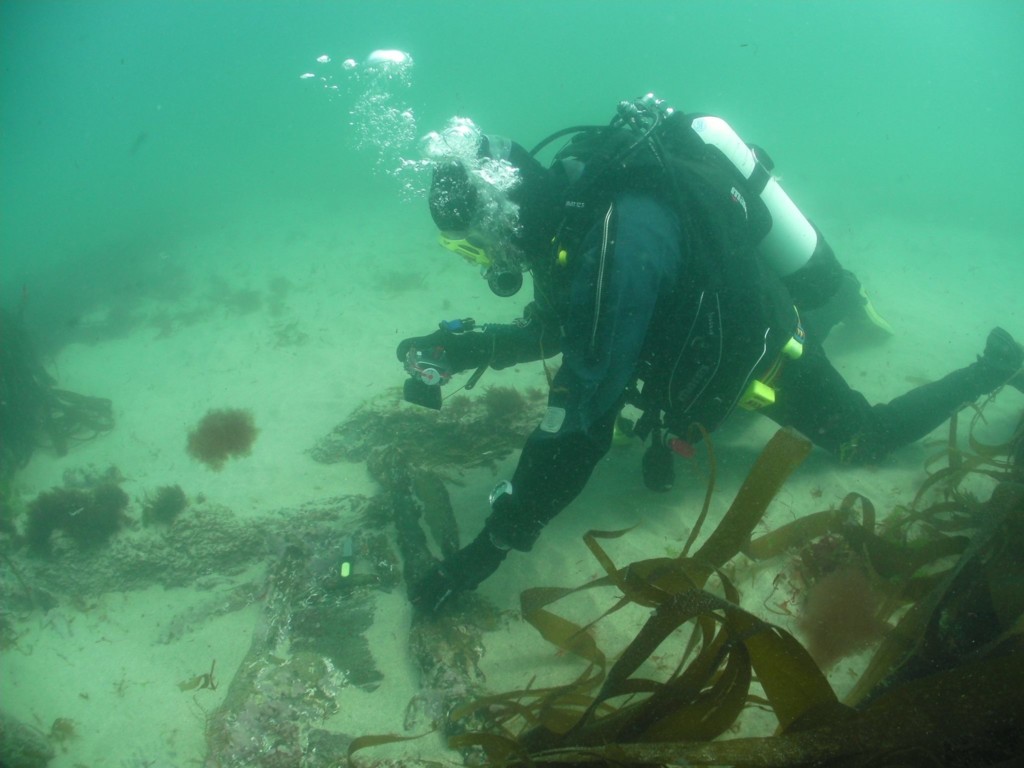
Archaeologist David Gibbins photographing musket barrels revealed this year on the wreck of the Schiedam (photo: Mark Milburn)
Historic England has management responsibilities for the site but the involvement of divers ensures that the site is monitored. The approach to the historic wreck sites championed by Historic England is that they are a shared resource for all to access and enjoy. Historic England’s Maritime Archaeologist Alison James said: “We are delighted to work with divers like Mark and David to help ensure that England’s protected wreck sites are enjoyed and protected for years to come. They are helping to ensure that the story of the site is not lost and is known to a wider audience.”
The Schiedam has one of the richest backstories of any wreck ever discovered in British waters. At the time of her loss in April 1684 she was part of a fleet carrying ordnance, tools, horses and people back from Tangier, the port in present-day Morocco that had been acquired by the English King Charles II as a dowry with his Portuguese wife, but had been abandoned by the English in the face of Moorish threat. The Schiedam herself was originally Dutch, a merchantman sailing from Holland, but had been captured by Barbary pirates off Spain in 1683 and her crew enslaved.
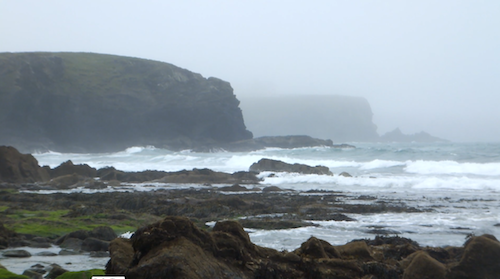
The site of the wreck of the Schiedam off Gunwalloe, Cornwall, at exactly the same location as the shipwreck scene filmed in the TV series Poldark (photo: David Gibbins)
Soon afterwards she was captured again, this time by a Royal Navy ship commanded by a daring young captain named Cloudesley Shovell – later as an admiral to be lost with his fleet in 1707 in the Scilly Isles through a navigational error, the trigger for the race to find a better way of establishing longitude – who brought his prize to Tangier. As if that were not enough, none other than the diarist Samuel Pepys enters the picture, as he was an Admiralty official sent to Tangier to help oversee the evacuation. Much of his correspondence relating to the wreck of the Schiedam still survives.
The big gun that the divers saw on the wreck was a demi-culverin, one of a number recorded among the ordnance at Tangier but the only one from the colony known to survive. The hand-grenade is particularly fascinating as one of the earliest known examples to be found archaeologically, and because their use is well-documented at Tangier. Invented in the 16th century, ‘hand-granadoes’ had only been a standard armament for English regiments for a few years by the time of the Tangier colony. Nevertheless, they were among the first list of equipment requested for the colony in 1662 and played a pivotal role in the defence against the Moors. When one of the outlying forts was captured by the Moors after savage fighting in 1680 they seized a large store of hand grenades and other armaments, swinging the siege in the Moors’ favour and helped to precipitate the English decision to abandon the colony a few years later.
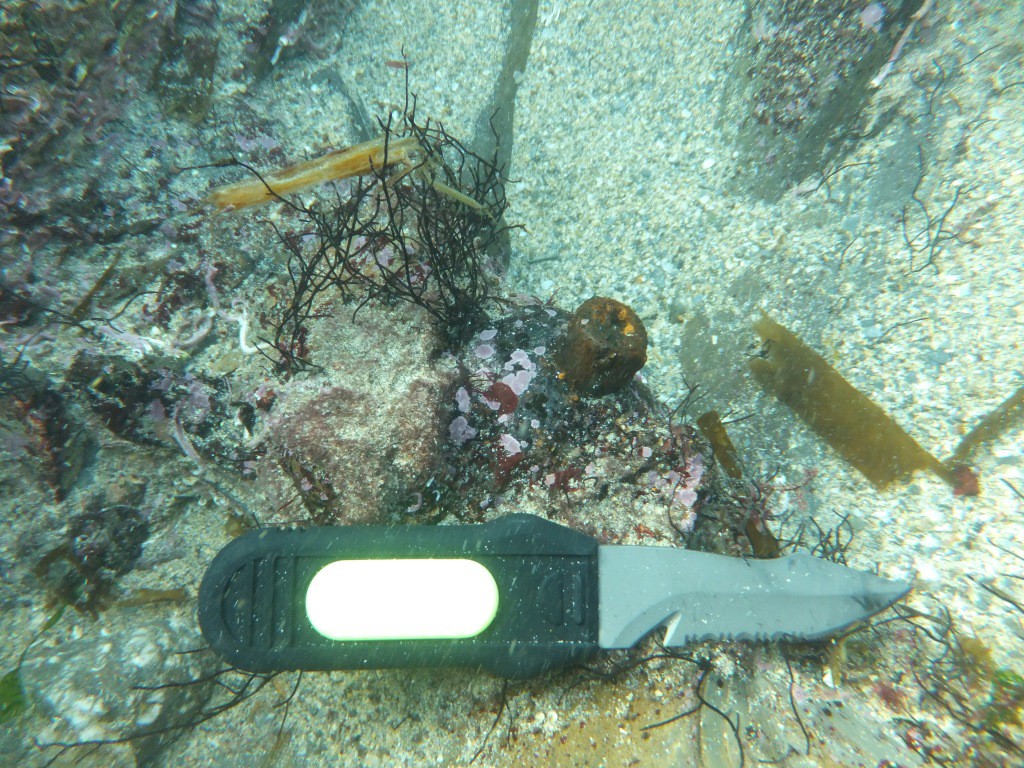
A 17th century grenade found on the wreck of the Schiedam, complete with its wooden fuse plug (photo: David Gibbins)
The wreck dates a century before the setting of Poldark, but the similarities are striking. “You would have seen local people lining the shore just as the film crew were that day in 2014, and flotsam coming ashore at exactly the same place,” Gibbins said. A letter written soon after the wrecking to Lord Dartmouth, Admiral of the Fleet, suggests that the locals availed themselves of what they could but were far from the murderous Cornish wreckers of legend: “All the guns and mortar pieces may be saved, but palisades, muskets, rigging, are mostly embezzled, though the justices and gentlemen of the country are extremely civil and save what they could; and the country very kind to the poor people.”
Investigations of the Schiedam are carried out under the aegis of Historic England, which administers the Protection of Wrecks Act 1973 and issues discretionary licenses for divers to visit protected wreck sites off England. Further exploration of the Schiedam is planned for next year.
Marine Life & Conservation Blogs
Book Review: Shells of the World

Shells of the World: A Natural History by M.G. Harasewych
Shells of the world is a guide to the world of marine, shelled molluscs. And what a varied and interesting world it is. Some of my favourite things to find on a dive are detailed in this book, including disco clams (or Electric File Clams as they are correctly names), the cephalopods, giant clams and sea hares. There are also many on my wish list, top of which is the Nautilus.
Each chapter provides a detailed description of the species, along with beautiful images. You can dive deeper and discover where they live, both with global distribution and the habitat they prefer. Learn about their diet, reproduction and diversity.
Having dipped in and out of this lovely book over the past few weeks, it has inspired me to learn more about this group of animals that we see on most divers, wherever we are in the world. Some of the shells are incredibly intricate and beautiful. I have always agreed with never collecting, or touching, marine life. The description of a certain set of cone shells should be a warning to those that are happy to pick up marine life! One of the cone shells has a local name called the cigarette snail. Why? Because once the venom is in your system from this animal, you only have time to smoke one cigarette before the affects of the venom are fatal!
What the publisher says:
Mollusks are invertebrate animals with a remarkable natural history and a rich fossil record, and their shells are prized for their breathtaking variety and exquisite beauty. Shells of the World provides a wide-ranging look at the incredible diversity of marine mollusks. An informative introduction outlines the lineages covered, followed by a directory section, split into classes, that profiles a broad selection of different taxa to give a sense of their sheer numbers and variety.
- Features hundreds of beautiful color photos, depicting both the live animals and their shells
- Discusses mollusk evolution, anatomy, life cycles, behavior, and ecology
- Describes unique characteristics, distribution, habitat, and size
- Provides valuable insights into the conservation of the world’s marine mollusks
- Ideal for malacologists and shell collectors everywhere
About the Author:
M. G. Harasewych is research zoologist emeritus and former curator in the Department of Invertebrate Zoology at the Smithsonian Institution’s National Museum of Natural History. A fellow of the American Association for the Advancement of Science, he is the author (with Fabio Moretzsohn) of The Book of Shells: A Life-Size Guide to Identifying and Classifying Six Hundred Seashells.
Book Details
Publisher: Princeton University Press
Hardcover
Price: £25
ISBN: 9780691248271
Published: 9th April, 2024
Gear News
Go anywhere with Stahlsac
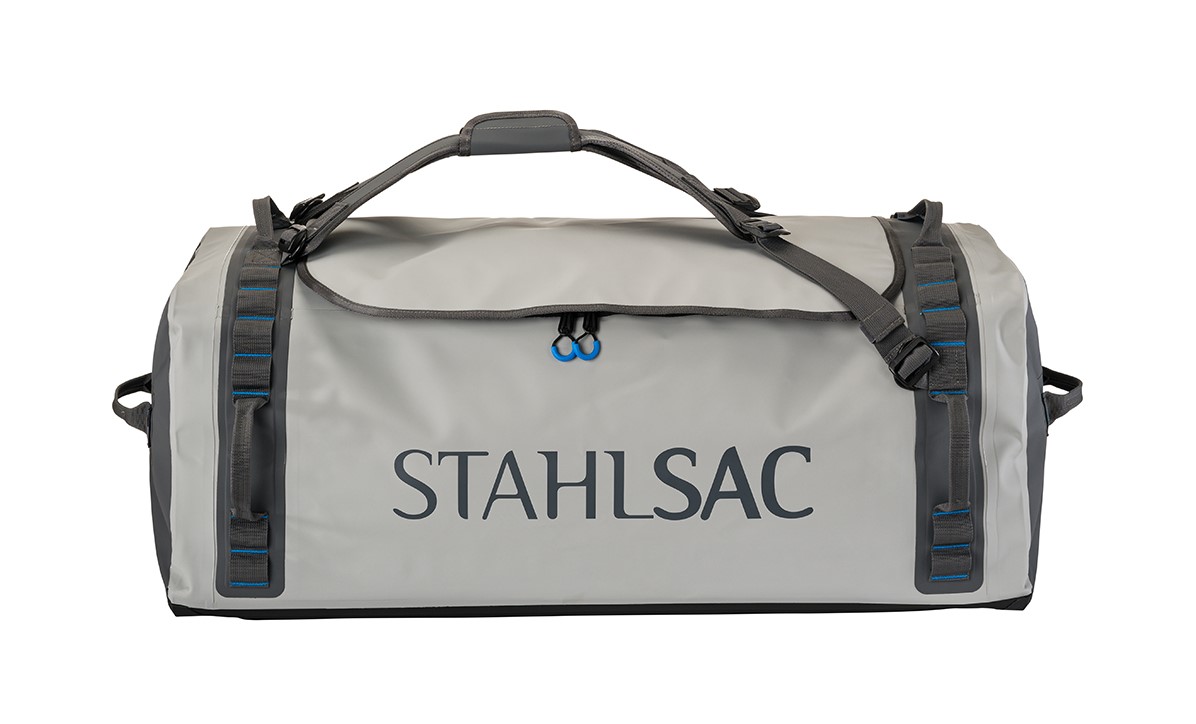
Stahlsac dive bags and travel luggage are built for our community of divers, surfers, kayakers and outdoor explorers who need bags that are constructed with durability, toughness, and 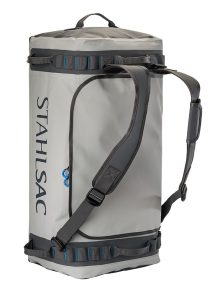 the highest quality the industry has ever seen. We were founded by one man determined to build better watersports and dive bags, and today, that mission is carried on by many. Adventure doesn’t just present itself; it requires discovery. When we design dive bags, we make sure they are tough enough for you to explore in all conditions—warm and cold, wet and dry—to the nearest and farthest reaches of the earth. And for those times you want to push the boundaries of adventure, Stahlsac dive bags make sure you can truly GO ANYWHERE.
the highest quality the industry has ever seen. We were founded by one man determined to build better watersports and dive bags, and today, that mission is carried on by many. Adventure doesn’t just present itself; it requires discovery. When we design dive bags, we make sure they are tough enough for you to explore in all conditions—warm and cold, wet and dry—to the nearest and farthest reaches of the earth. And for those times you want to push the boundaries of adventure, Stahlsac dive bags make sure you can truly GO ANYWHERE.
Abyss Duffels
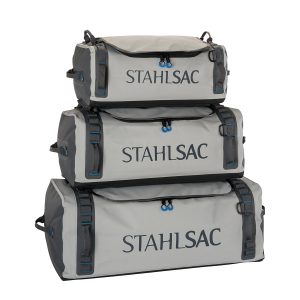 Made to be your partner-in-crime on every adventure, Stahlsac’s Abyss Duffels protects your gear from Mother Nature’s worst. Tough and 100% waterproof with double-TPU nylon material that shrugs off daily wear-and-tear, and RF-welded seams further boost the bag’s potential for lifelong exploring. Get Wet. Get Lost. Go Anywhere with Abyss.
Made to be your partner-in-crime on every adventure, Stahlsac’s Abyss Duffels protects your gear from Mother Nature’s worst. Tough and 100% waterproof with double-TPU nylon material that shrugs off daily wear-and-tear, and RF-welded seams further boost the bag’s potential for lifelong exploring. Get Wet. Get Lost. Go Anywhere with Abyss.
- A weatherproof duffel for trips, travel, and adventure
- Ultra-durable double-TPU nylon protects your gear
- Material repels water and keeps your equipment dry
- RF-welded seams are flush, tough, and waterproof
- Removable straps transform duffel into backpack
- Zippered internal stow compartments carry essentials
- External zippered flap is easy to open and close
- Welded external handles make transporting a breeze
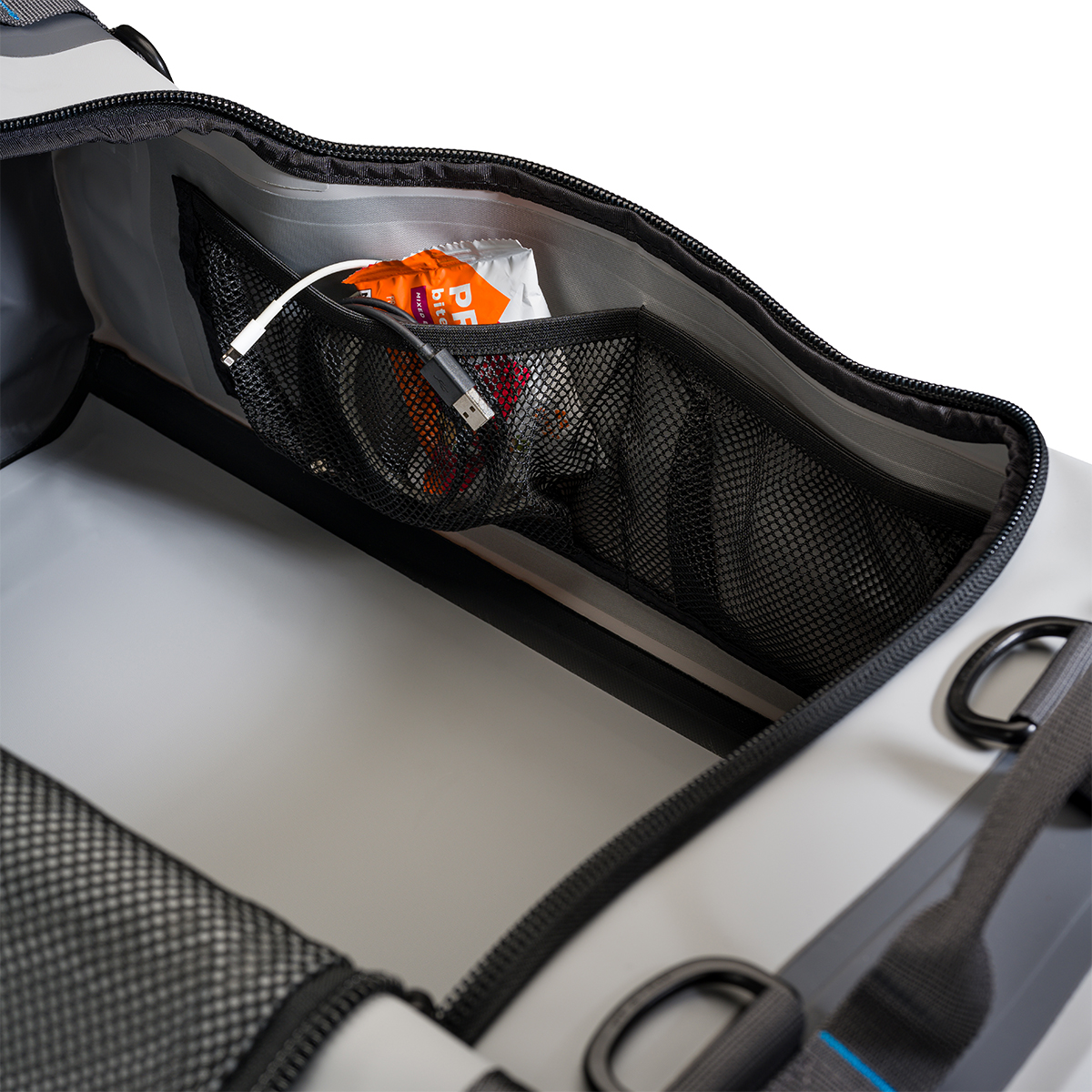
Panama Mesh Backpack
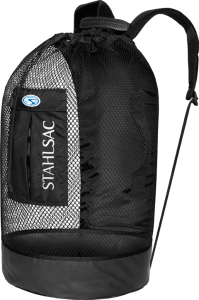 The most copied design in scuba diving, the Stahlsac Panama Mesh Backpack is the “original” design and features two high-density foam padded shoulder straps, extra durable polyester mesh, duffel bag handles and our unique zippered dry pocket inside that combines with a wet pocket outside. The bottom’s built from reinforced 18-gauge PVC nylon to combat the wear and tear of your active coastal lifestyle, and, as a bonus in every bag, we supply a 12″ x 12″ mesh drawstring satchel for extra stowing utility. Pack up your beach kit and go.
The most copied design in scuba diving, the Stahlsac Panama Mesh Backpack is the “original” design and features two high-density foam padded shoulder straps, extra durable polyester mesh, duffel bag handles and our unique zippered dry pocket inside that combines with a wet pocket outside. The bottom’s built from reinforced 18-gauge PVC nylon to combat the wear and tear of your active coastal lifestyle, and, as a bonus in every bag, we supply a 12″ x 12″ mesh drawstring satchel for extra stowing utility. Pack up your beach kit and go.
- Density foam padded shoulder straps
- Outside wet/dry pockets
- 2 Carry handles
- Tough, snag-resistant polyester mesh
- Reinforced PVC bottom
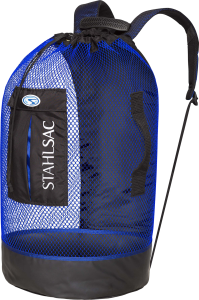
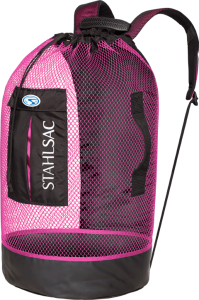
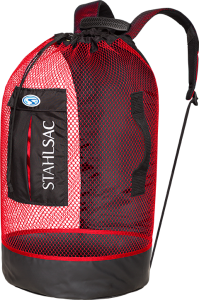
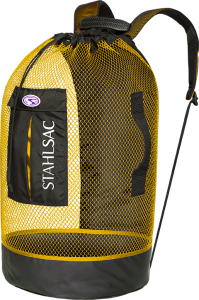
For more information about Stahlsac bags, visit www.stahlsac.com/dive-bags.
Sea & Sea is the home of Stahlsac and other leading diving brands in the UK.
-

 News3 months ago
News3 months agoCapturing Critters in Lembeh Underwater Photography Workshop 2024: Event Roundup
-

 Marine Life & Conservation Blogs3 months ago
Marine Life & Conservation Blogs3 months agoCreature Feature: Swell Sharks
-

 Gear Reviews4 weeks ago
Gear Reviews4 weeks agoGEAR REVIEW – Revolutionising Diving Comfort: The Sharkskin T2 Chillproof Suit
-

 Blogs2 months ago
Blogs2 months agoMurex Resorts: Passport to Paradise!
-

 Blogs3 months ago
Blogs3 months agoDiver Discovering Whale Skeletons Beneath Ice Judged World’s Best Underwater Photograph
-

 News3 months ago
News3 months agoPADI Teams Up with Wellness Brand Neuro to Drive Ocean Change and Create a Blue State of Mind
-

 Gear Reviews3 months ago
Gear Reviews3 months agoGear Review: Oceanic+ Dive Housing for iPhone
-

 Marine Life & Conservation2 months ago
Marine Life & Conservation2 months agoSave the Manatee Club launches brand new webcams at Silver Springs State Park, Florida


